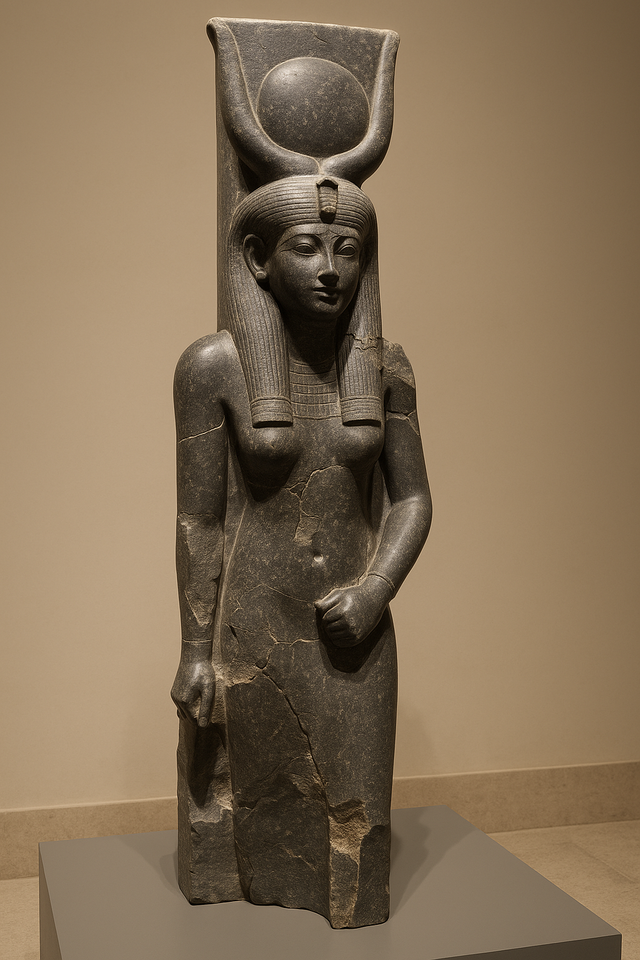Statua della dea Hathor 🖤🌞
La statua in pietra scura rappresenta Hathor, facilmente riconoscibile grazie all'emblema che porta sul capo: il disco solare incastonato tra due corna di vacca, simbolo distintivo della dea. Hathor era venerata come dea dell'amore, della musica, della maternità e della gioia, ma anche come protettrice dei defunti e dea celeste.
Nonostante le mutilazioni evidenti (soprattutto alle braccia e alla parte inferiore del corpo), l'opera conserva ancora una forte espressività. La postura e il volto rivelano la tipica idealizzazione egizia della divinità femminile, con tratti armoniosi e capelli acconciati a treccine.
Questa statua risale probabilmente al Nuovo Regno o a epoche successive (tra il 1550 e il 1070 a.C., ma potrebbe essere anche più tarda). Le sue dimensioni, il materiale impiegato (probabilmente grauwacke o diorite), e la qualità della lavorazione indicano che si trattava di un oggetto di culto destinato a un tempio o a un contesto funerario di alto rango.
Cosa vi colpisce maggiormente di questa statua? Scrivetelo nei commenti e lasciate un like se siete affascinati dalla forza spirituale di questa dea! 👍✨🖤
La prima fotografia l'ho creata con l'intelligenza artificiale, mentre le altre le ho scattate personalmente al Museo Egizio 📸🕵🏻♂️🏛️
Traduzione in inglese 🇬🇧
The statue in dark stone represents Hathor, easily recognizable thanks to the emblem on her head: the solar disk nestled between two cow horns, a distinctive symbol of the goddess. Hathor was worshipped as the goddess of love, music, motherhood, and joy, but also as a protector of the dead and a celestial deity.
Despite the visible damage (especially to the arms and lower body), the piece still conveys a strong expressiveness. Her posture and facial features reflect the typical Egyptian idealization of female divinity, with harmonious traits and braided hair.
This statue likely dates back to the New Kingdom or later periods (between 1550 and 1070 BCE, though it may be more recent). Its size, the material used (probably greywacke or diorite), and the quality of the craftsmanship suggest it was a cult object intended for a temple or a high-ranking funerary context.
What strikes you the most about this statue? Share your thoughts in the comments and leave a like if you’re fascinated by the spiritual power of this goddess! 👍✨🖤
The first photo was created using artificial intelligence, while the others were taken personally by me at the Egyptian Museum 📸🕵🏻♂️🏛️



